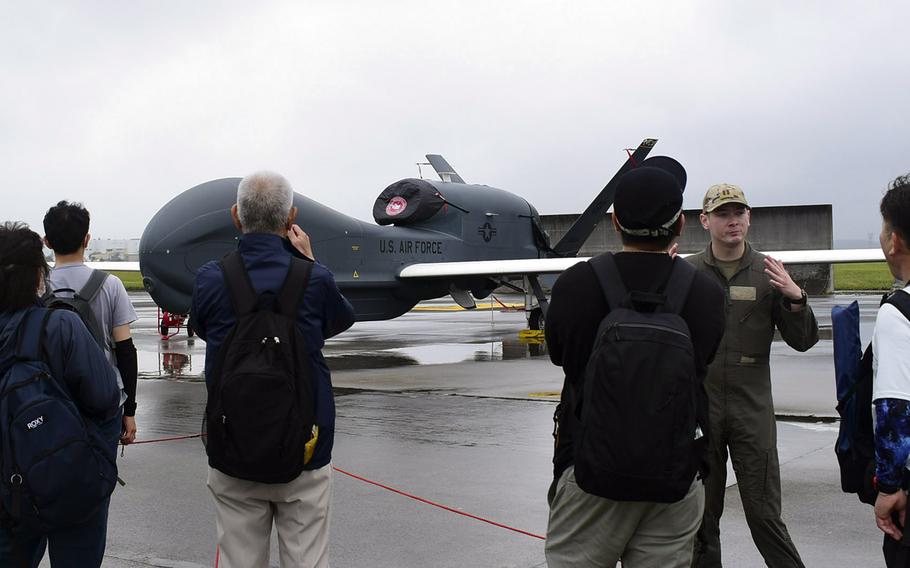
Vistors check out an Air Force RQ-4 Global Hawk surveillance drone during the 47th annual Japanese-American Friendship Festival at Yokota Air Base, Japan, May 20, 2023. (Juan King/Stars and Stripes)
YOKOTA AIR BASE, Japan — Air Force RQ-4 Global Hawk reconnaissance drones arrived in Japan in time to avoid a typhoon that passed close to their home station on Guam on Wednesday.
The unmanned aircraft began their annual deployment to the airlift hub in western Tokyo on May 15, the 374th Airlift Wing announced on Thursday.
A day earlier, Typhoon Mawar, which generated winds of nearly 150 per hour, passed close to Andersen Air Force Base, Guam, where the 4th Reconnaissance Squadron drones are normally based.
A statement on Andersen’s official Facebook page Friday indicated the airfield is closed in the typhoon’s wake and when it reopens, bringing in aid will be the priority.
The Global Hawks summer in Yokota to avoid the typhoon season on Guam, U.S. Forces Japan spokesman Air Force Maj. Thomas Barger said by phone Friday.
Information about the number of drones and airmen in the rotation wasn’t available immediately, he said. The mission is an “enduring” rotation, meaning it doesn’t have a set end date, Barger added.
Past drone rotations to the base have included as many as five drones and dozens of maintainers.
Beginning in 2014 the Air Force positioned Global Hawks at Misawa Air Base in the country’s northeast, where Japan now stations its own Global Hawks. Since 2017, the U.S. drones have rotated to Yokota.
The Global Hawk flies at 60,000 feet and has a line of sight to targets more than 340 miles away, according to manufacturer Northrop Grumman.
“The Global Hawk’s mission is to provide a broad range of U.S. intelligence, surveillance, and reconnaissance capabilities to support joint forces, and Allies and partners in worldwide peacetime, contingency, and crisis operations,” the wing said in its statement.
The exact range of the aircraft’s cameras and sensors is classified, but a Global Hawk flying near the Korean Demilitarized Zone, for example, could see well beyond the Yalu River that marks North Korea’s border with China.